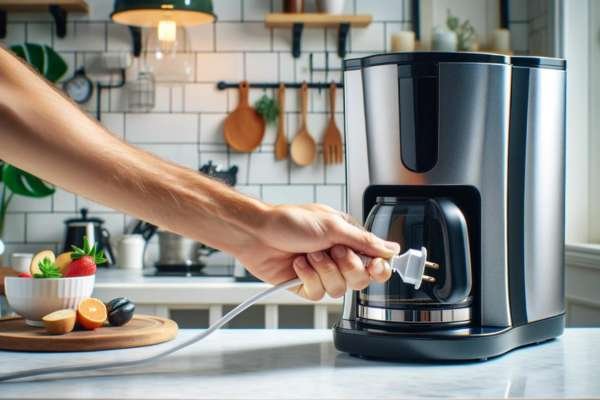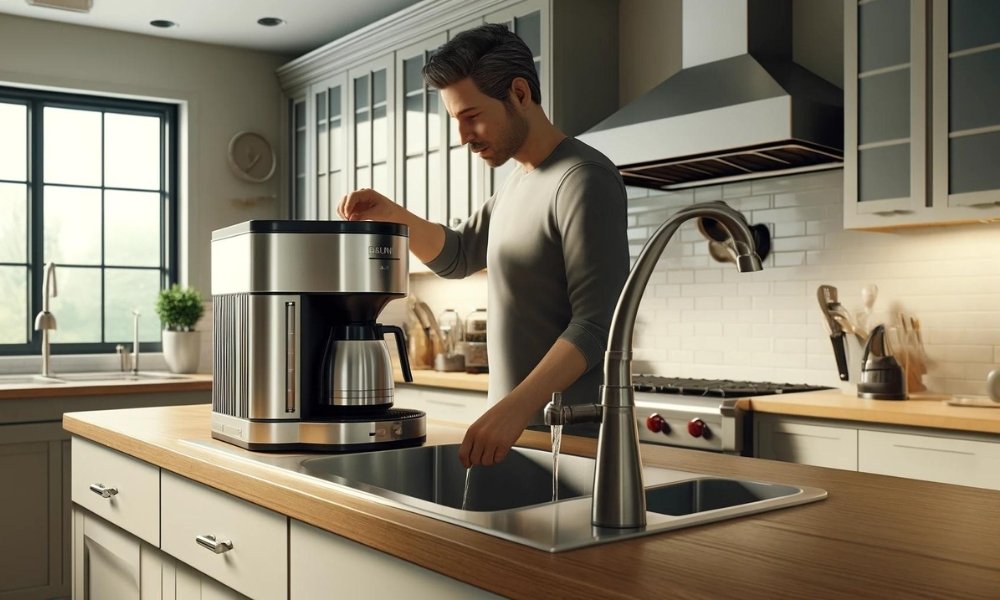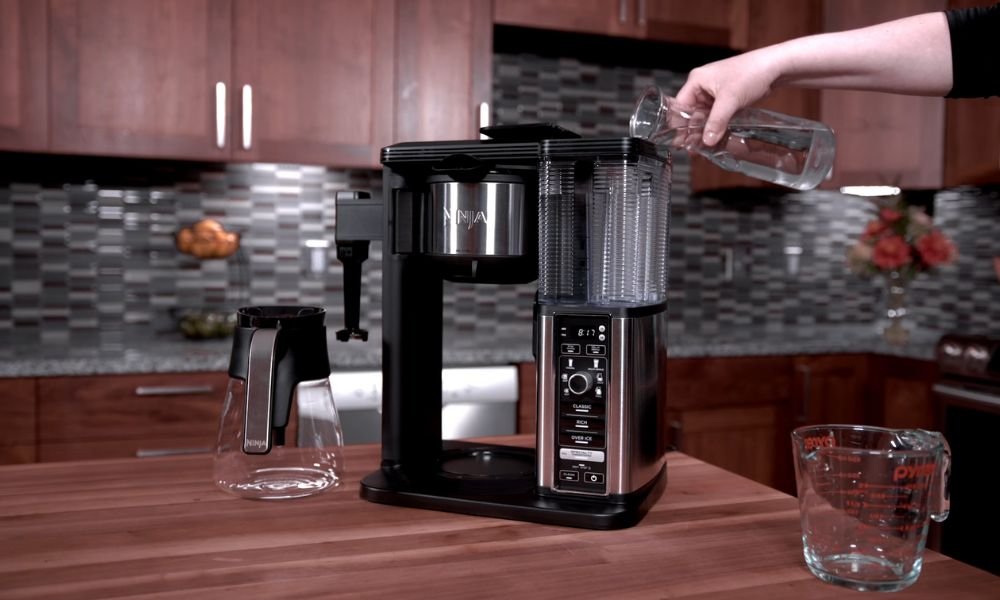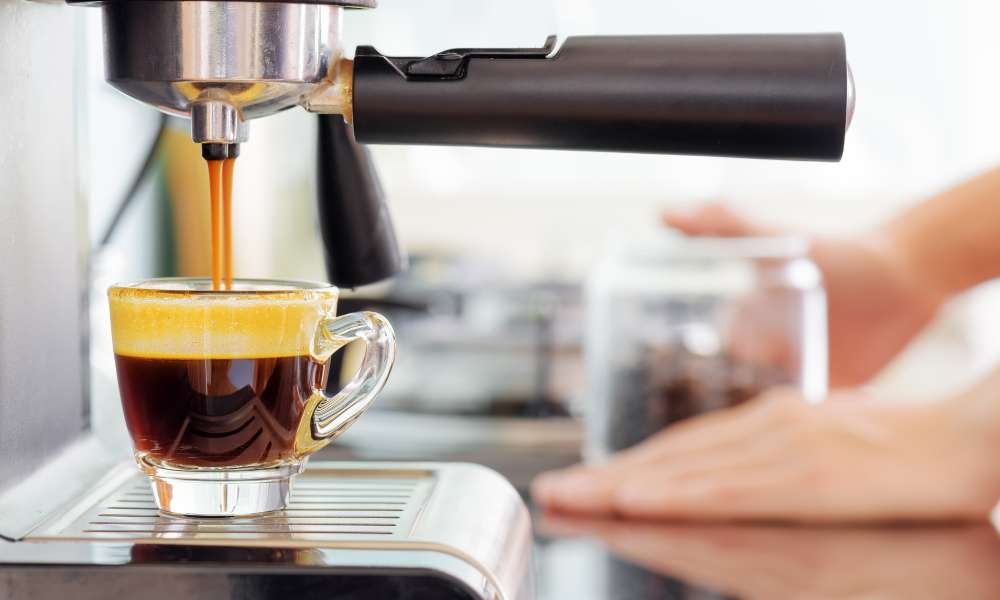Draining your Bunn coffee maker is a crucial maintenance step that ensures optimal performance and longevity of your appliance. This guide provides a detailed walkthrough on how to properly drain your machine, covering everything from the necessary tools to step-by-step instructions. Whether you’re preparing your coffee maker for storage or looking to perform routine cleaning, these clear and simple steps will help you efficiently and safely drain your Bunn coffee maker, ensuring delicious coffee every time. Follow along to keep your machine in top condition.
Brief overview of the importance of draining a Bunn coffee maker
Regularly draining your Bunn coffee maker is crucial for maintaining its performance and extending its lifespan. This process prevents the buildup of minerals and impurities that can affect the machine’s functionality and the taste of your coffee. Draining also aids in cleaning and is essential before storing the machine or relocating it to prevent water leakage and damage. By ensuring your Bunn coffee maker is properly drained, you contribute to optimal brewing conditions and consistently high-quality coffee.
Steps to drain a Bunn coffee maker
– Turn off and unplug the coffee maker

Before servicing or cleaning your coffee maker, it is critical to turn off the machine and unplug it from the power source. This precaution ensures your safety from electrical hazards while performing any maintenance. Additionally, allowing the coffee maker to cool down before handling reduces the risk of burns and other injuries. These simple but vital steps protect both you and the integrity of your coffee maker, facilitating a safe environment for any necessary upkeep or repairs.
– Remove the water from the reservoir
Removing water from a reservoir is vital for maintenance and efficiency. To ensure safe and effective drainage, first shut off the inlet valve to stop additional water flow. Open the drain valve at the lowest point of the reservoir to allow gravity to clear the water. Monitor the process to avoid any potential hazards or system damage. This procedure not only helps in maintaining the structural integrity of the reservoir but also prevents the stagnation of water, reducing the risk of contamination and ensuring the system remains in optimal working condition.
– Disassemble the coffee maker components
Disassembling the components of a coffee maker is a key step in thorough maintenance. This process involves removing parts such as the brew basket, carafe, and drip tray, which should be handled with care to avoid damage. Each component must be cleaned separately to remove coffee oils and mineral deposits. This not only ensures the longevity of the machine but also maintains the quality of the coffee it produces. Always consult the manufacturer’s instructions to correctly and safely disassemble your specific model, preserving functionality and safety. Read – How to descale Bunn coffee maker
– Clean the components thoroughly
Thorough cleaning of coffee maker components is essential for both hygiene and machine efficiency. Regular cleaning prevents the buildup of coffee oils, hard water minerals, and other residues that can impair flavor and function. Key components to focus on include the brew basket, carafe, and water reservoir. Use warm, soapy water for washing and a soft brush or cloth for scrubbing. Vinegar or a specialized descaling solution can help dissolve mineral buildup. After cleaning, rinse all parts thoroughly to remove any soap or cleaner residue. This practice ensures the coffee maker operates at peak performance and delivers consistently delicious coffee.
– Reassemble the coffee maker
Proper reassembly of your coffee maker after cleaning is crucial for ensuring its optimal function and safety. Begin by ensuring all components are completely dry to avoid water damage or electrical issues. Follow the manufacturer’s instructions closely, fitting each part securely in its designated place. The brew basket, carafe, and water reservoir should click into place without force, indicating a proper fit. Misaligned components can lead to leaks or operational malfunctions. Regular reassembly practice not only prolongs the life of your coffee maker but also guarantees the best coffee experience with every brew.
List of tools and materials required for the draining process
To efficiently drain a coffee maker, it’s important to have the right tools and materials at hand. Essential items include a large container to catch the water, ensuring it is big enough to hold the entire water reservoir’s contents. Clean towels are also necessary for wiping down the machine and handling any spills during the process. Optionally, a soft brush or a sponge can be useful for cleaning any residue inside the reservoir. Having these items prepared beforehand streamlines the draining process, prevents messes, and helps maintain the cleanliness and functionality of your coffee maker.
How to safely disconnect the coffee maker from the power
Safely disconnecting your coffee maker from the power source is essential to ensure both safety and equipment integrity. Begin by ensuring the coffee maker is turned off. Allow the device to cool down completely to avoid any risk of burns. Once cooled, firmly grasp the plug — never the cord — and gently pull it from the outlet. This practice prevents electrical shocks and protects the cord from damage. Regularly inspecting the plug and cord for wear and tear is also advisable to maintain safe operation. Always prioritize safety to extend the lifespan of your coffee maker.
Importance of regular maintenance, including draining
Regular maintenance of your appliances, particularly draining your coffee maker, is essential for optimal performance and longevity. Draining the machine removes old water and mineral deposits that can build up and affect the taste of your coffee and the efficiency of your machine. This simple routine not only ensures that your coffee maker functions at its best but also prevents common problems like clogging and overheating. By incorporating draining into your maintenance schedule, you can enjoy consistent, quality brews and avoid costly repairs, thereby extending the life of your coffee maker.
Importance of maintenance
Draining your Bunn coffee maker is a key aspect of maintenance that ensures the machine continues to produce high-quality coffee. Regular draining removes old water and mineral deposits, preventing clogs and maintaining the internal components in pristine condition. This process is crucial not only for routine cleaning but also for preparing the machine for storage, as it prevents the stagnation and bacterial growth associated with residual water. By following a consistent draining routine, you can extend the lifespan of your coffee maker, enhance its performance, and ensure a superior taste in every cup.
Explain why periodic drainage is important for maintenance and longevity
Periodic draining is essential for maintaining the performance and extending the longevity of Bunn coffee makers. This procedure helps to clear out any standing water that can become a breeding ground for bacteria and scale buildup. Such accumulations can impair the heating efficiency, alter the taste of your coffee, and lead to potential malfunctions. Regular draining ensures that all internal pathways are clear, safeguarding the heating elements and internal mechanisms from damage. Integrating this simple maintenance step can significantly enhance the reliability and lifespan of your Bunn coffee maker, ensuring consistently excellent coffee.
Conclusion
Draining your Bunn coffee maker is a straightforward yet crucial task that plays a significant role in its upkeep. By following the steps outlined in this guide, you can effectively remove old water and mineral deposits, ensuring that your machine continues to operate efficiently and produce high-quality coffee. Regular draining not only extends the lifespan of your coffee maker but also maintains its performance, making it an essential part of your coffee machine’s maintenance routine. Embrace this simple practice to keep your Bunn coffee maker in optimal condition for years to come.



